Running on Empty
Over the past decade, ultrarunning has gone from a fringe pursuit for distance freaks to a hypercompetitive sport attracting big-time sponsors. But a mysterious training condition is suddenly plaguing its ranks, robbing a generation of top athletes of their talents and forcing victims to wonder: Is it possible to love this sport too much?
New perk: Easily find new routes and hidden gems, upcoming running events, and more near you. Your weekly Local Running Newsletter has everything you need to lace up! .
In May of 2012, a thousand of the world’s best ultrarunners were lining up for the start of the , an 83.3-kilometer course traversing the volcanic outcroppings of La Palma, in the Canary Islands. The atmosphere was taut, a mix of pent-up energy and anticipation, and the runners milled about, checking their watches and exchanging high fives. “Bienvenidos, amigos,” yelled a scrawny Spanish announcer with a spectacular black mullet.
At the front of the queue, 34-year-old Mike Wolfe was trying to focus on the day ahead. A thin-faced, introspective Montanan, Wolfe had recently quit his job as an assistant U.S. attorney in Helena to concentrate on running for the North Face’s global athletic team. Transvulcania was his debut as a full-time professional, and even though he had set a course record at Wyoming’s in 2010 and won the extremely competitive in California’s Marin Headlands in 2011, he felt he had something to prove. A good performance would help validate his unconventional career turn.
Lately, however, his 160-mile training weeks had seemed harder than before. He wasn’t sleeping well and was constantly hungry. Just before flying to the Canaries, Wolfe went out for a casual training run with a few friends and could barely keep pace. Five hours later, he inhaled a peanut butter and jelly sandwich at the kitchen table and made an unremarkable entry in the meticulous training logs he keeps: “4:50, plenty of vert. Moved well, tired today with hard pace.”
When the gun went off, Wolfe fought to stay toward the front of the stream of Transvulcania runners, which were bottlenecked on the narrow singletrack. He redlined the first 6,000-foot climb with an up-and-coming American, Dakota Jones, and the sport’s reigning king, Spaniard Kilian Jornet. He kept up with the leaders as they strode across the spine of the island, but about halfway through the race Wolfe began to slow. He wasn’t cramping or bonking—he’d experienced those things often enough to know when he’d gone out too fast or not eaten enough. This was different.
“I didn’t push myself too hard,” Wolfe, now 37, told me last September, reflecting on the moment when his running career began crumbling beneath him. We were sitting on the grass near the finish of the Rut ultramarathon in Big Sky, Montana, a race Wolfe codirects, watching his 11-month-old son, Colt, play with a box of animal crackers as the last runners came across the line. “It wasn’t like my stomach was bad or I couldn’t eat. It was like my body was just shut down. Like, Nope, you can’t run that hard. I’m not going to allow it.” Eight hours later, Wolfe finished in 13th place, confused and crushed by his performance. It would be another year before he found a label for his ongoing malaise: overtraining syndrome.
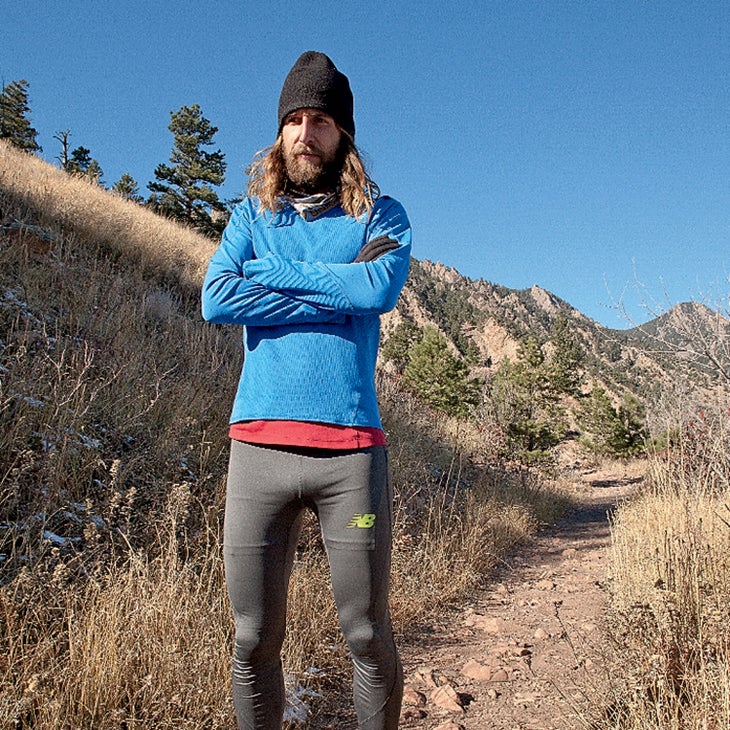
Wolfe’s death march to the finish line at Transvulcania was the beginning of a long and painful battle with the condition, a poorly understood disorder that afflicts endurance athletes training at the outer edges of human performance. Still rare in most power and speed sports, cases of overtraining syndrome, or OTS, have steadily increased in the endurance ranks over the past decade. As ultradistance events have gained popularity, a generation of top ultrarunners are suddenly breaking down faster and in greater numbers. The past seven years have seen the rise and decline of at least a dozen elite competitors, including , who won the women’s division of the North Face Endurance Championship in 2011; , two-time winner of the Leadville 100; , who set a new record at the 2010 Western States 100; and , who demolished the Hardrock 100 record in 2008. Each of them reached the pinnacle of the sport only to mysteriously struggle to repeat their best results. Transvulcania was the start of Wolfe’s own precipitous fall.
“OTS is one of the scariest things I’ve ever seen in my 30 plus years of working with athletes,” says David Nieman, former vice president of the American College of Sports Medicine. “To watch someone go from that degree of proficiency to a shell of their former self is unbelievably painful and frustrating.”
Nieman, a professor of health and exercise science at Appalachian State University in North Carolina, has spent his career studying the effects of training on the immune system. In 1992, he received the first of a dozen distressingly similar letters from endurance athletes, each of them describing a sudden loss of ability as they struggled with everything from anemia to chronic dehydration to a basic inability to get out of bed. Nieman was both troubled and fascinated by these tales. Their symptoms all seemed to point to overtraining syndrome, and he’s been looking into the root causes of the condition ever since.
Nieman, like other specialists in sports medicine, was aware of OTS back then, but with so few documented cases there were effectively no studies to review. The earliest known scientific reference to OTS was made by a researcher and athlete named Robert Tait McKenzie, who noted in his 1909 book, Exercise in Education and Medicine, an acute exhaustion and “slow poisoning of the nervous system which could last weeks or even months.” Decades later, renowned South African exercise-science professor Timothy Noakes wrote in detail about the condition in . Published in 1985, it’s one of the few books athletes with OTS have as a reference. The runners Noakes examined had pushed themselves to a point at which their bodies—and, more perplexingly, their minds—had simply stopped responding. As a result, they suffered everything from “generalized fatigue” and “recurrent headaches” to “an inability to relax, listlessness,” and “the swelling of lymph glands.”
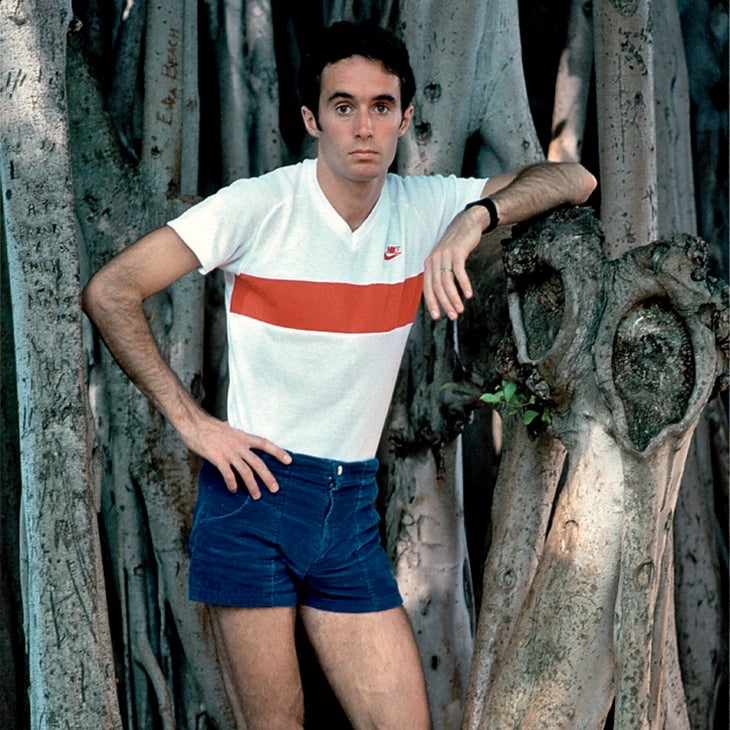
Perhaps the most well-known case of OTS is that of American legend Alberto Salazar, now the head coach of the . Between 1980 and 1984, Salazar set three American track records and won three New York City Marathons in a row. But he was also a self-described exercise addict, obsessed with the next race or workout and never satisfied with his victories. In 1984, his excessive training load caught up with him when he finished a disappointing 15th at the Los Angeles Olympic marathon. For the next ten years, plagued by respiratory infections and depression, Salazar struggled to figure out what had happened but found few answers. When he retired in 1998, he was barely able to complete runs longer than 30 minutes.
Salazar pushed himself too hard, but his approach was rooted in science. Humans evolved to adapt to rising stress levels, which makes gradually increasing training load one of the most effective ways to achieve better results. It’s the reason marathon runners condition themselves with incrementally harder weeks followed by intervals of rest. This approach, known as periodization, often leads to overtraining—the routine muscle soreness and fatigue experienced by many athletes who endure a long season or a hard push for a big race. By some estimates, around 60 percent of elite runners will experience some degree of overtraining in the course of their athletic careers, but they re-cover quickly with strategic downtime.
Overtraining syndrome is what happens when the body never gets that rest. Through some combination of excessive exercise and inadequate recovery, athletes experience a severe shock to the parasympathetic nervous system, which controls the body’s inflammatory pathways. Under normal circumstances, when your body is stressed, your sympathetic nervous system kicks in to help you respond. Your heart races. Your pupils dilate. The blood rushes from your digestive system to organs needed for immediate survival. The parasympathetic system is the counterbalance, bringing the body back to a state of equilibrium. After a hard outing, your heart rate calms and blood returns to your extremities, restoring your body’s normal functions. For athletes with OTS, those balancing responses no longer occur. The parasympathetic system effectively goes haywire.
“Overtraining syndrome is one of the scariest things I’ve ever seen,” says David Nieman, former vice president of the American College of Sports Medicine. “To watch someone go from proficiency to a shell of their former self is unbelievably painful and frustrating.”
“You climb and you climb and you climb, and your body adapts to bigger and bigger loads,” says Jeff Kreher, a physician at Massachusetts General Hospital and the author of , published in Sports Health in 2012. “But there will come a point where you reach the pinnacle and stop positively adapting to stress and strain, and instead you start responding negatively.”
The consequences of pushing past that point are different for every athlete, but OTS can affect everything from hormonal balance to neurological function. Some athletes describe mysterious pains, loss of appetite, and diminished libido. Others experience strange heart arrhythmias or a debilitating staleness in their legs. (One runner told me that for days on end he couldn’t get his heart rate below 130 beats per minute.) Researchers say that OTS can mimic a host of diseases, including leukemia. But the most common symptom described by athletes is simply an ineffable, confounding lack of ability.
“It’s not fatigue,” Kreher clarifies. “If you’re pushing the limits of your body, you’re going to feel fatigued.” Instead, it’s what Nieman first encountered in those letters he received: the sudden, almost overnight disappearance of a runner’s elite endurance talents. For athletes experiencing OTS, this can be terrifying. Even worse, doctors can’t tell them if they’ll ever recover.
In The Lore of Running, Noakes describes why competitive runners are uniquely predisposed to the relentless negative feedback loop that characterizes OTS: “We believe that the harder we train, the faster we will run, and we ignore the evidence that this is blatantly untrue. Thus we train harder and run worse. And then, in the ultimate act of stupidity, we interpret our poor races as an indication that we have undertrained.”
Noakes could have been describing Mike Wolfe. When he returned home from Transvulcania, Wolfe’s response to his poor performance was to redouble his efforts. “I didn’t know if it was just a bad day or a bad race,” he told me. “All I could think was, I’ve got to train harder. Maybe I didn’t put in enough time.”
Back in Montana he started running 25, sometimes 30 hours a week, fasting to drop any extra weight off his already thin frame and beating himself up in the margins of his training logs:
7/2/2012: Festered… mind and body. Should I be totally resting up more right now? And eating way less/smarter? Am I totally burnt, physically? Mentally?
8/2/2012: Ran this a.m. for 1 hour. Had one cup java first. Felt slow, crappy… So sick of this shit!
10/4/2012: I’m really trying to be conscious right now about losing some worthless snack weight… Need to be more diligent, take action, get fucking after it, and restore the body and the mind!
That summer, Wolfe had arrived with high hopes at the start line of the , held in Squaw Valley, California, but the stale legs showed up once again. “Sixty miles in”—Wolfe makes the sound of an explosion. “I basically walked the last 20 miles. It was grim. And that was my whole season, just one after another.”
Wolfe had entered ultrarunning in 2005, just as it was beginning to boom. Fifteen years ago, signature races like Western States and the Leadville 100 were amateur affairs, with top competitors juggling training and racing alongside full-time jobs. By the mid-2000s, the North Face and Salomon, recognizing Americans’ surging interest in challenges beyond the marathon, began supporting ultra teams, enabling some of the sport’s best athletes to run professionally for the first time. As the field became increasingly competitive, records started falling. Between 2004 and 2012, the fastest men’s mark at the Western States 100 dropped by nearly an hour, from 15:36 to 14:46. Last year, Kilian Jornet bested the Hardrock 100 record by more than 40 minutes.
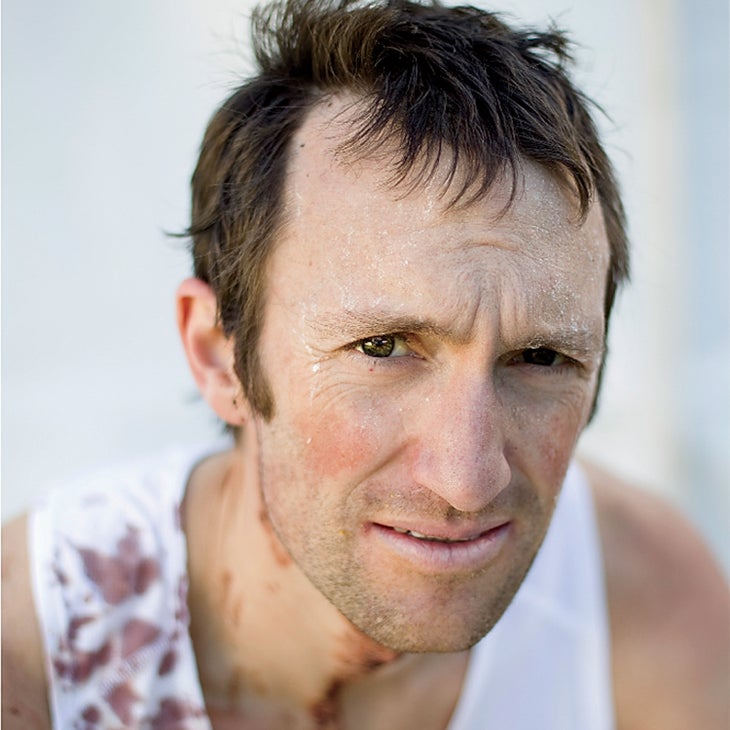
“Gone are the days when Tony Krupicka could camp out in a public restroom the night before Leadville, win the next day, and place high in five more ultras that same year,” says Christopher McDougall, author of the bestseller Born to Run, a book that played a large role in ultrarunning’s mainstream breakthrough. In this hypercompetitive new era, runners are taking on unprecedented training loads to keep pace, which explains how a rare condition like OTS began showing up so frequently in the sport’s top ranks.
That’s not to say that athletes in other sports aren’t working hard. They are. But they typically do so within a team environment or under the direction of a professional coach, providing them with well-established frameworks for success. Even though ultrarunning has grown, there’s still little infrastructure to support its competitors. Sponsorships mean full-time careers, but that rarely includes coaching. Most top runners oversee their own training, logging miles with other ultra stars, who often share the same dangerous mix of characteristics: a high tolerance for suffering, rejection of moderation, and the belief that the top performers are the ones who train the most. Inside this bubble, many runners are reluctant to complain or discuss their own struggles, making OTS, until very recently, a silent plague. And there’s no organized response to keep it from spreading. Ultrarunning doesn’t have a governing body to, say, dictate how often an athlete can race in a season. Sponsors, meanwhile, are only just beginning to learn how dangerous OTS can be.
Robert Amrine, a sports-medicine doctor in Missoula, Montana, who’s currently working with Wolfe and a handful of other athletes dealing with OTS, thinks that some of the training frenzy that causes the disorder is a byproduct of the Tour de France culture. “A lot of these ultrarunners grew up watching the Tour in the Lance days, when everyone wanted to believe he was racing clean,” Amrine told me when I stopped by his Missoula office last winter. “They were raised to think they had to train maniacally in order to win, but it’s much harder to recover from that sort of intensity when you’re not doping.”

Another of Amrine’s patients, —a quiet, lanky, Patagonia-sponsored runner—struggled with OTS two years ago after packing together months of back-to-back races on top of the stresses of a new job and baby. “There’s not much science on what works and what doesn’t in the ultra world,” he says. “The demands runners put on their bodies year after year is unprecedented. No one knows the toll it’s taking, but people keep breaking down.”
Indeed, there seems to be a pattern for many of those who reach the highest levels of the sport: a steady two-year rise resulting in increasingly fast PRs and big back-to-back wins at marquee ultrarunning events, followed by sudden decline.
Though some recover, others disappear from the scene altogether. In 2008, 23-year-old Kyle Skaggs, who had seemingly come out of nowhere the year before to dominate ultra races, shattered the course record at the Hardrock 100 with a time some people thought couldn’t be beaten. After that season he never raced again. Instead, he moved home to New Mexico to run an organic farm.
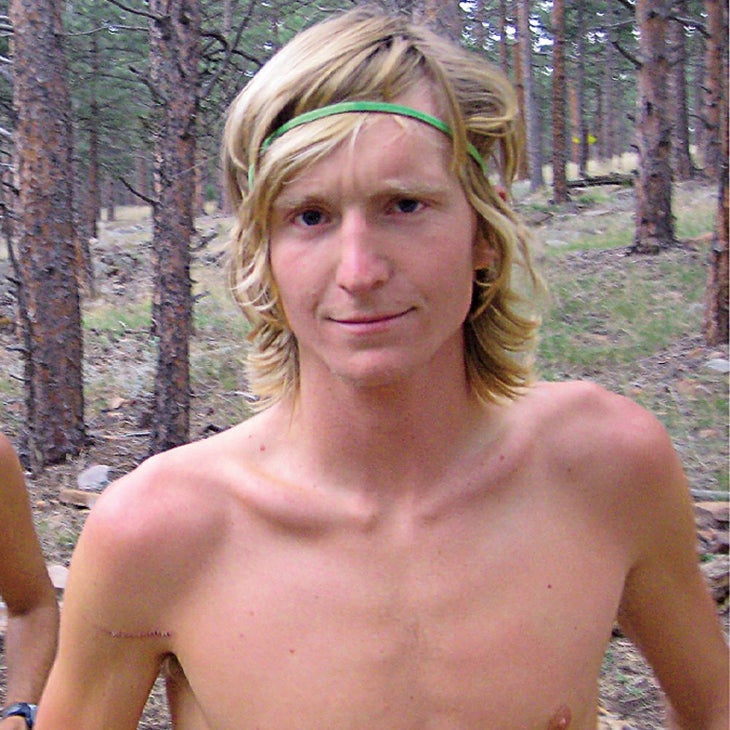
Skaggs didn’t publicize his reasons for leaving, but word eventually got out that he’d suffered a serious case of OTS. “It started with what I thought was really bad strep throat but all of a sudden turned into the worst insomnia ever,” Skaggs told me. After Hardrock, he took a single day off, then started training for a marathon. “Stupid-hard running,” he says, “and the symptoms just kept getting worse and worse.” After a month of this, Skaggs knew he needed to stop. “I’d read Noakes’s book. By that point, I pretty much assumed it was overtraining.”
Wolfe’s decline mirrored this pattern. He peaked in 2011 with his North Face Championship victory, when he was still fitting ultrarunning into his career as an attorney, then began experiencing the symptoms of OTS the following season. Looking back, Wolfe acknowledges that he was logging too many miles, locked into an unrelenting battle for improvement. But the approach made sense. That massive training load had transformed him into one of the best runners in the country.
Until it didn’t. At the end of the frustrating 2012 summer, Wolfe’s wife, Stephanie, a physician, suggested he consider getting some blood work done. Wolfe reluctantly made an appointment.
When a well-trained ultrarunner walks into a doctor’s office and says, “I don’t feel right,” most physicians aren’t equipped to deal with the central issue. Very few of them have ever seen OTS. They may examine the patient, perform a few tests, and conclude that he’s fine. And in terms of basic health, most are, at least when they’re being evaluated against a baseline of normal healthy Americans.
Consider the saga of Alaskan ultrarunner Geoff Roes. In 2010, Roes ruled the sport, winning everything from the in early April to Western States, where he set a new course record. The following year, after several months of sluggish training, Roes woke up one day feeling dizzy. Within a week he was suffering full-body pains and numbness in his extremities. He’d waffle between jittery agitation, as though he’d just had seven cups of coffee, and a fatigue so profound that he could hardly get off the living room couch.
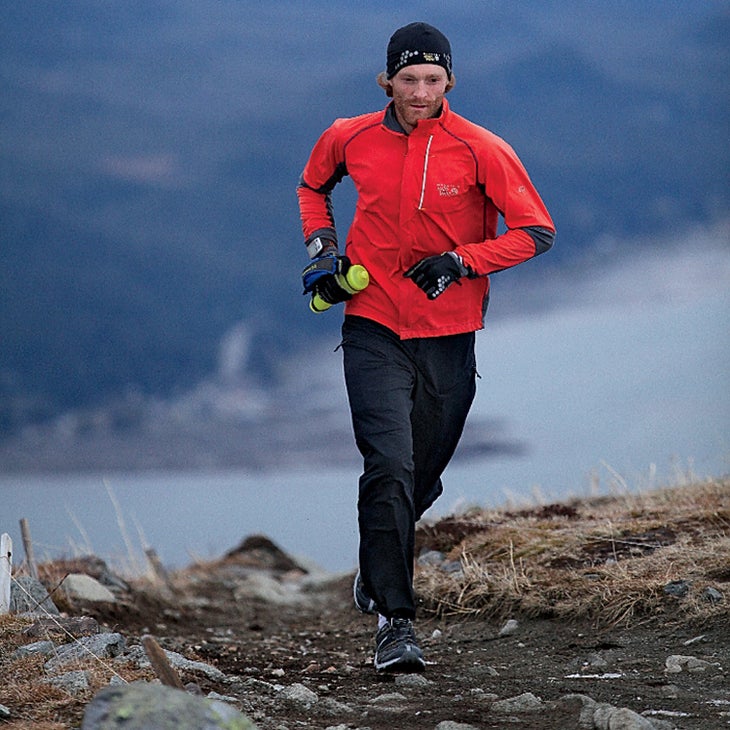
After ten days of acute symptoms, Roes finally went to see a doctor. “I was convinced I’d come down with some severe condition that was going to kill me,” he says. For the next two years, Roes’s life became a series of waiting rooms and tests: blood work, brain scans, heart screenings. “I was having severe fevers and extreme phases where I would go into such a brain fog, I thought I might black out,” he says. The tests yielded no definitive diagnosis.
Roes wouldn’t necessarily have had better luck had he started with a sports-medicine specialist. Though awareness of OTS has grown, understanding of the condition hasn’t caught up. For ethical reasons, researchers can’t force athletes into an overtrained state in order to study them, so most of the available data on OTS is anecdotal. There’s no consensus on its defining markers, and that makes it extremely tricky to diagnose. The result is that even a doctor like Amrine who’s familiar with the condition is more comfortable ruling out every other possibility before settling on OTS.
“We can run blood panels and check T-cell function and cortisol levels and conclude that they’re off,” says Amrine, “but we don’t even know what [OTS] is, let alone how to treat it. It becomes a very nebulous diagnosis to tell a high-level athlete, who may or may not be getting paid to run, to take off six weeks or more when you’re not even sure OTS is what they have.”
For now the focus among doctors is on determining the physiological causes of the condition, but even here there’s no consensus. Professor Nieman believes that OTS is rooted in sufferers’ immune systems. His past research in exercise immunology helped establish that heavy exertion makes them more susceptible to upper-respiratory infections. Nieman’s theory is that when athletes train through such an illness, they place their immune systems under strain, eventually tipping into a state of post-viral fatigue and creating the conditions that lead to OTS. “Eighty-five percent of people I’ve worked with who have this syndrome trained or raced while they were sick,” he says
OTS can affect everything from hormonal balance to neurological function. Some athletes describe mysterious pains, loss of appetite, and diminished libido. Researchers say that OTS can mimic a host of diseases, including leukemia.
But as Kreher points out, plenty of people run while sick—and OTS cases don’t always coincide with bad colds. Kreher and others believe that the mind plays an equally important role. Because your central nervous system influences your brain as well as your physiology, he theorizes that true overtraining syndrome is triggered by a combination of psychological and physical stress.
“That’s the multi-system nature of the condition,” Kreher says. “The interaction of the mind and body is incredibly influential.” To finish a 100-mile race requires a psychological thrashing, and some runners have described a kind of post-race depression. As they try to rally to train for the next goal, perhaps beating themselves up for their prior performance, that mental stress, in addition to the physical depletion, could bring on OTS.
I asked Wolfe if he could pinpoint a moment or a specific event that might have had that kind of singular influence. He couldn’t think of one, but he speculated that years of mental fatigue could have taken its toll. “I believe in the mind-body connection,” he said. “I’ve often wondered about myself and others having worked so hard for so long that at some point the mind quits before the body and just says, ‘Enough.’ ”
Though their symptoms may differ, every runner I spoke with agreed that OTS had changed their relationship with running, sometimes significantly. They’d organized their lives around the sport, and when doctors told them time off is the only effective remedy, they were suddenly forced to confront life without it. “These athletes are so defined by their workouts,” says Kreher, “that forcing them to rest leads to a full-blown identity crisis.”
Anna Frost, a Salomon-sponsored runner, spent a year battling OTS. Recovery involved long stretches of time away from training, but she also credits the mental work she did. As she explains it, she had to put some distance between running and her sense of self. “I had to remember the reasons that running made me happy and stop trying to have it be my entire identity,” she says. She came back in 2014 and is now clocking better race times than she was before she got sick.
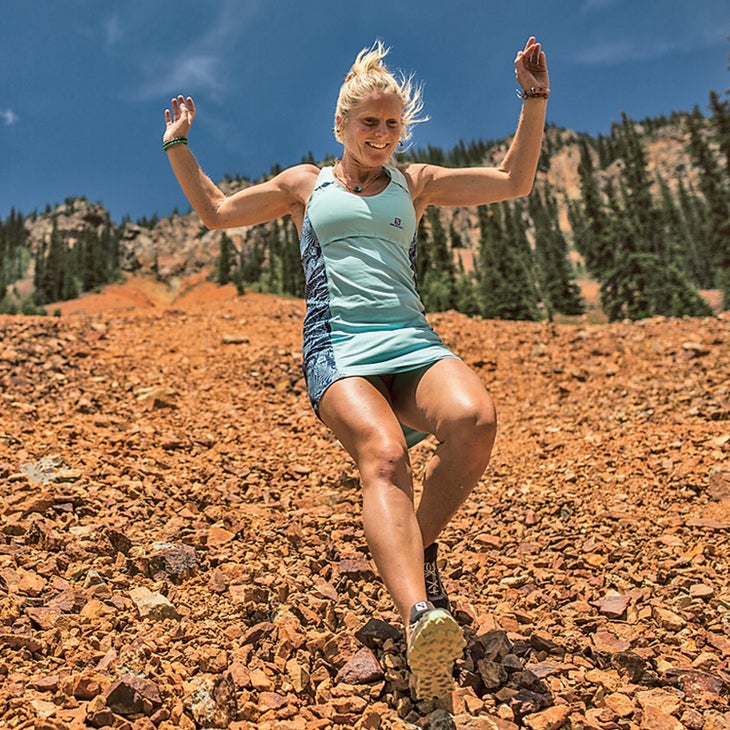
Others find it much harder to accept the consequences of a diagnosis. When Roes finally realized he had OTS, he spent a year coming to terms with it. “I felt like something rich and valuable had been taken away from me. Why was this horrible thing happening?” Soon after the onset of acute symptoms, he sent Skaggs a desperate e-mail looking for answers. “If he had any advice at all, it was to get away from the whole scene,” says Roes. “In time your body will feel better, and you’ll be able to just run however it fits into your life.”
Skaggs’s own experience is evidence that, at least for some athletes, OTS is a one-way ticket. It’s been more than six years since he walked away from the sport, yet even today, if he goes for a long run, the symptoms—heart palpitations, poor sleep—start to come back. He’s channeled his drive into Frisco Farm, the 12-acre organic spread he cultivates with his partner, Meggie Dexter, and their two Belgian draft horses, selling vegetables at the farmers’ market in Silver City, New Mexico, on weekends. “There are a lot of rich and valuable things in life,” he told me when I asked if he had any regrets. “Sure, I can’t go out and run to the same extent I once did, but if I could, I wouldn’t have a lot of what I have now.” Still, it’s clear that part of him misses the pleasure and self-definition that running once gave him. “It’s just that, because I had running first, it feels like more of a loss maybe,” he says. “But you can’t think about what you can and can’t do anymore.”
For Wolfe, a clean break from ultrarunning has proved elusive. Since 2012, he has rested and raced with varying degrees of frequency, hoping he’d recovered, but has never quite regained his top form. “I got to the point where a two-week break did absolutely nothing,” he told me last summer. “Hell, even a four-week break did nothing.” Even then he wasn’t ready to call it quits. But a few months later, a major ankle surgery forced him to take an extended hiatus.
When I caught up with Wolfe again in December, he was still on crutches. He was already looking ahead to being back on the trail this summer. “My long-term goal was never to do this forever,” he says, “but I’d like three or four more good years of racing.”
Being away from running forced Wolfe to reassess what the sport that had defined his life for nearly a decade may have done to him. If nothing else, he wants to recover the passion that attracted him to running in the first place—the simple joy of a long, grueling adventure in the mountains. “I found that when I’m ground down to a fine dust physically, my mental excitement and passion for running dwindles,” he says. “I tried so hard to maintain my stoke, but it just wasn’t there.” Finding it again would be the mark of full recovery.
Meaghen Brown () is a runner and frequent contributor to �����ԹϺ���.


